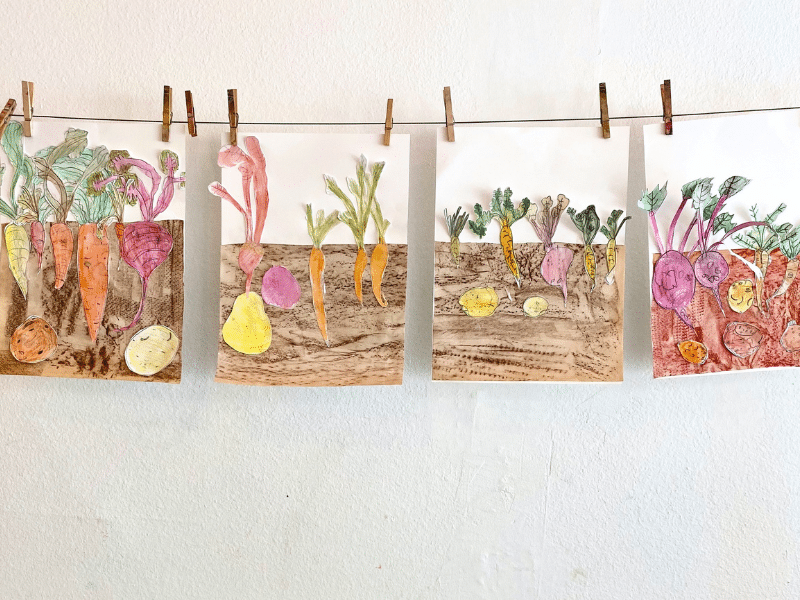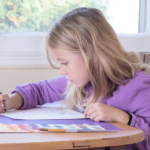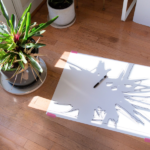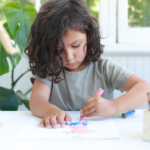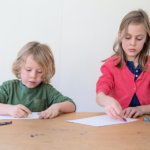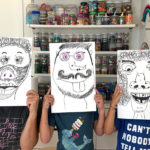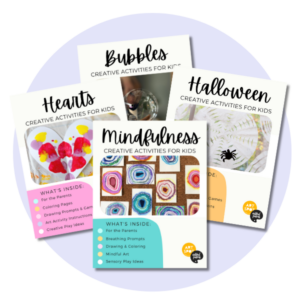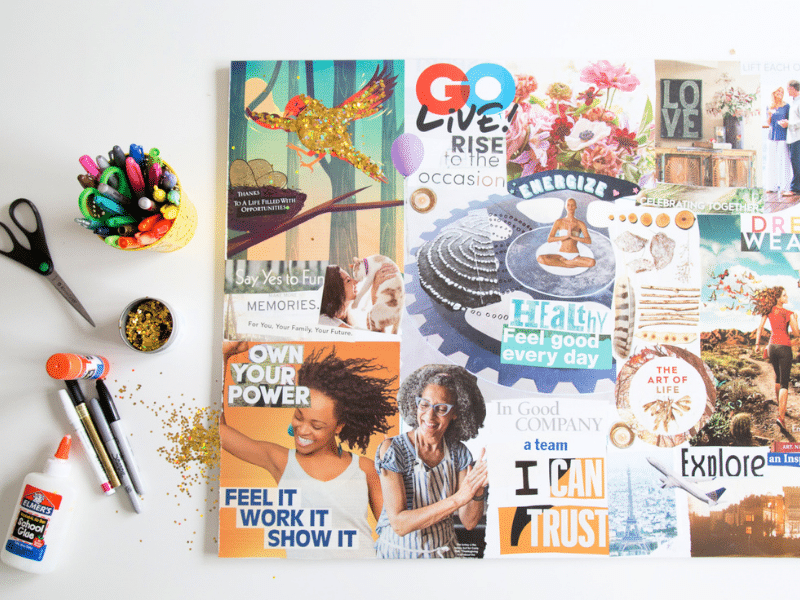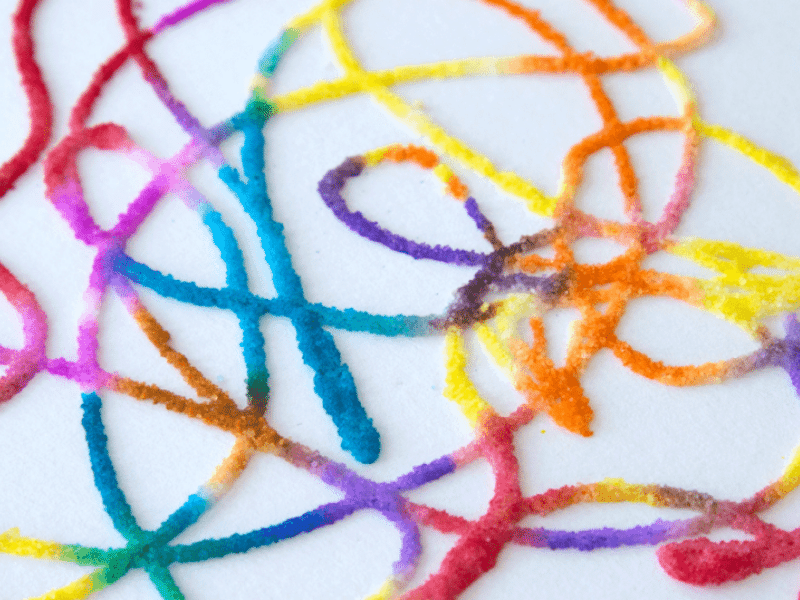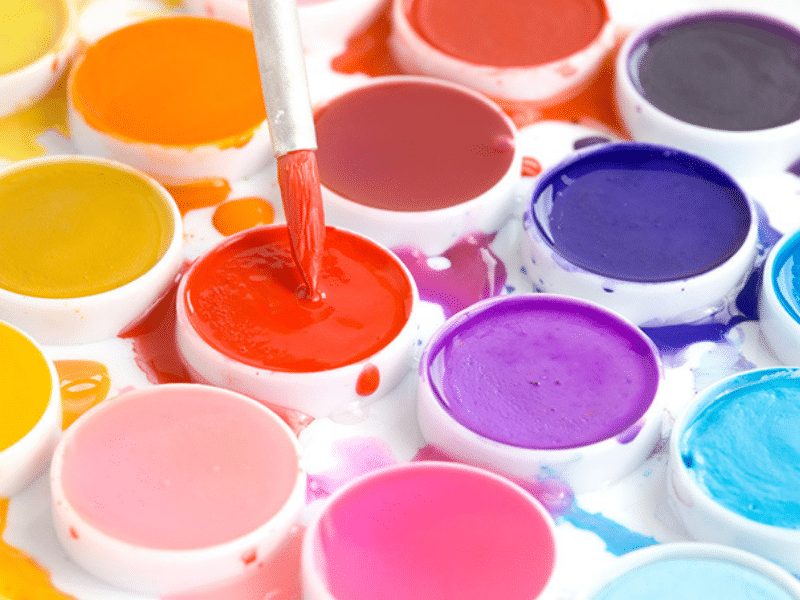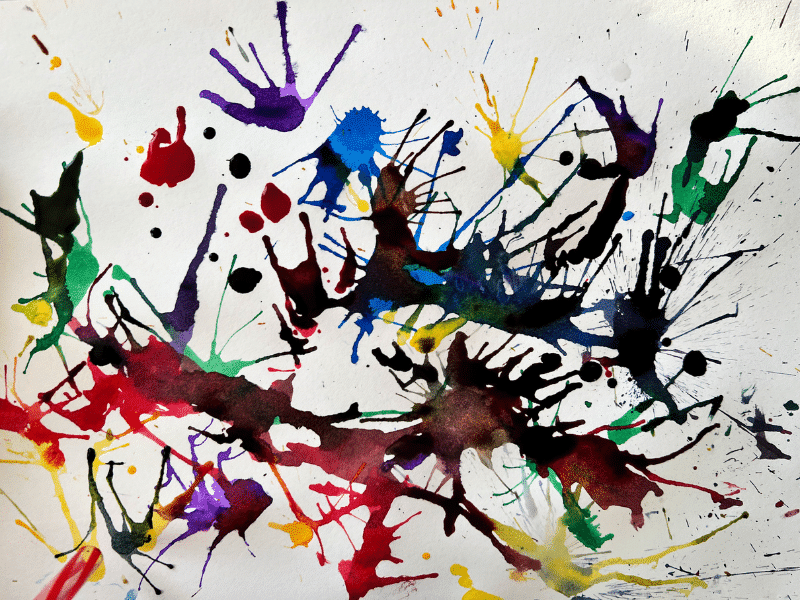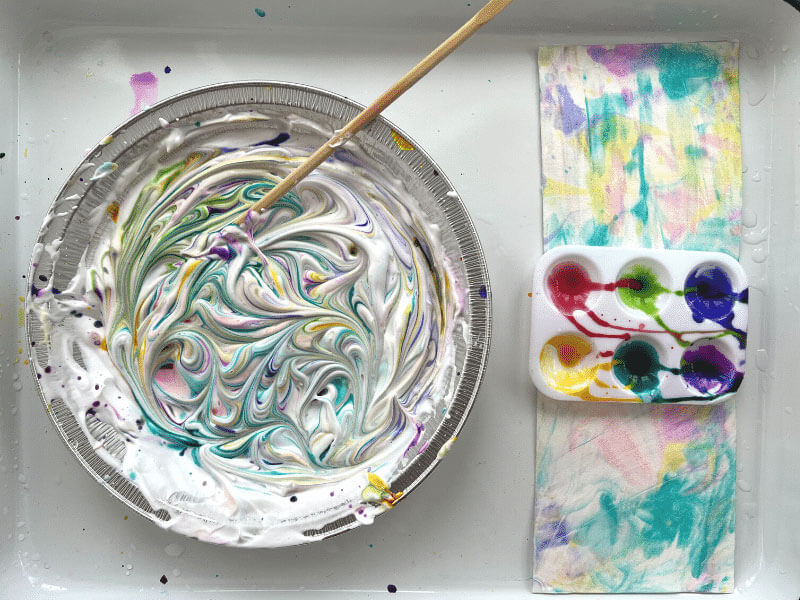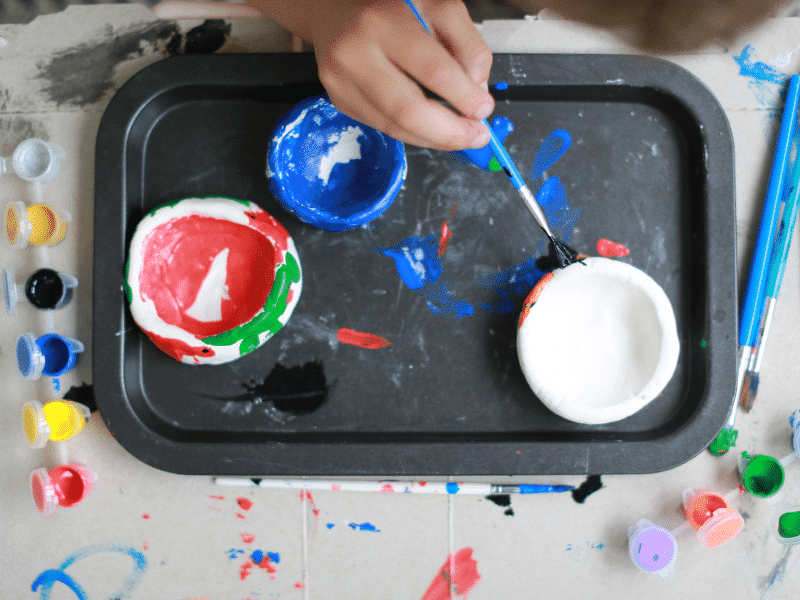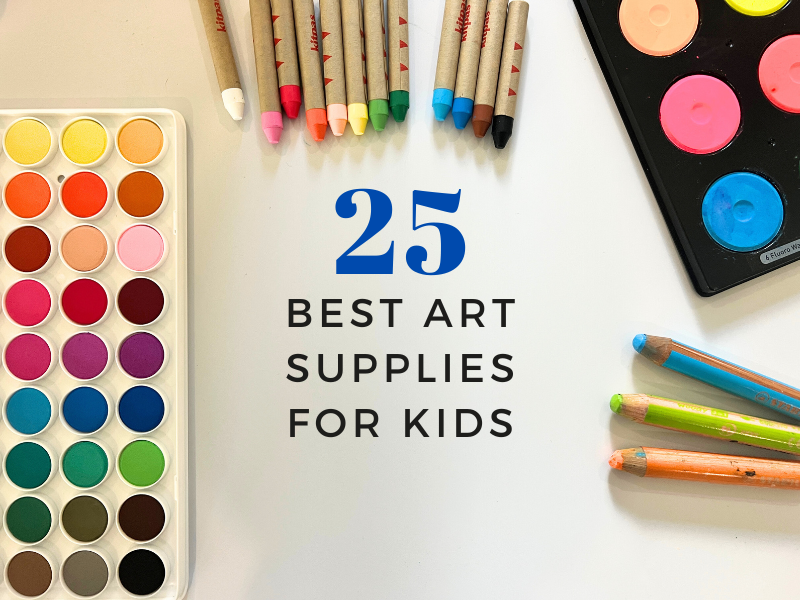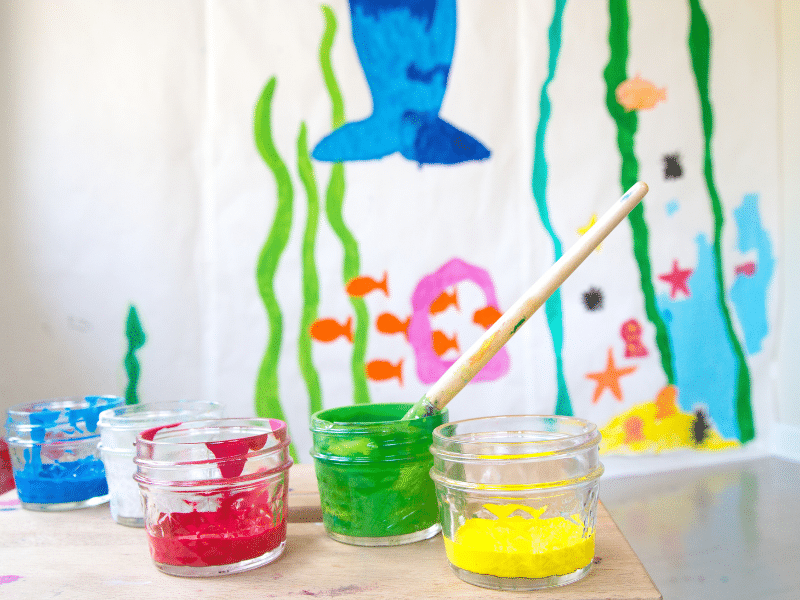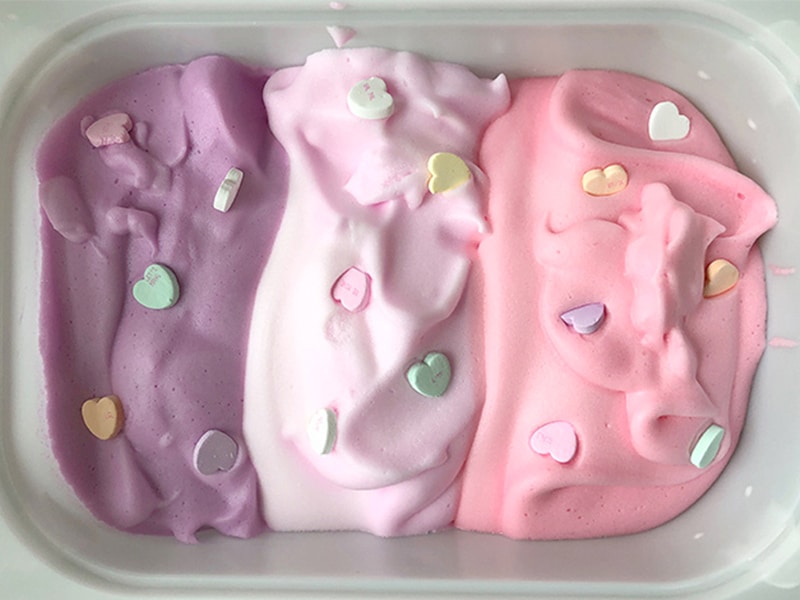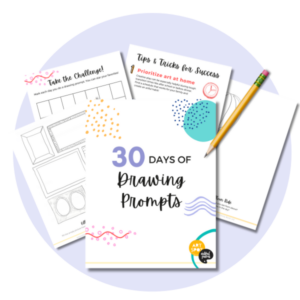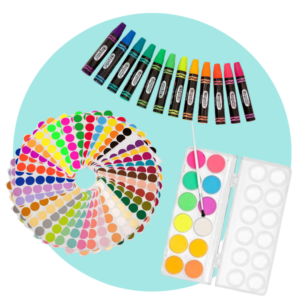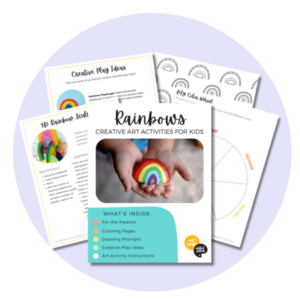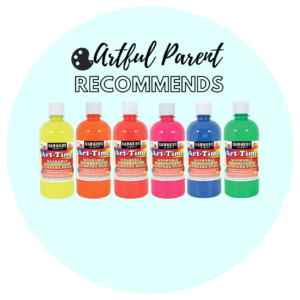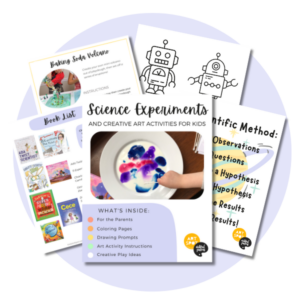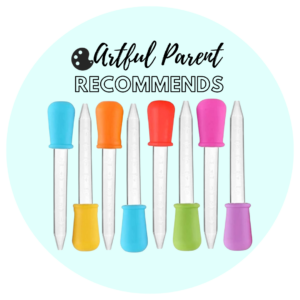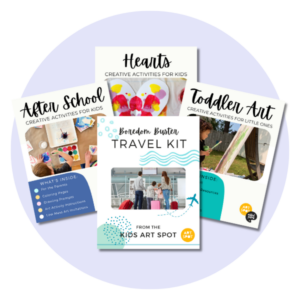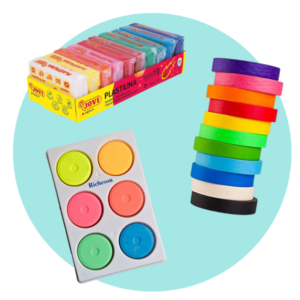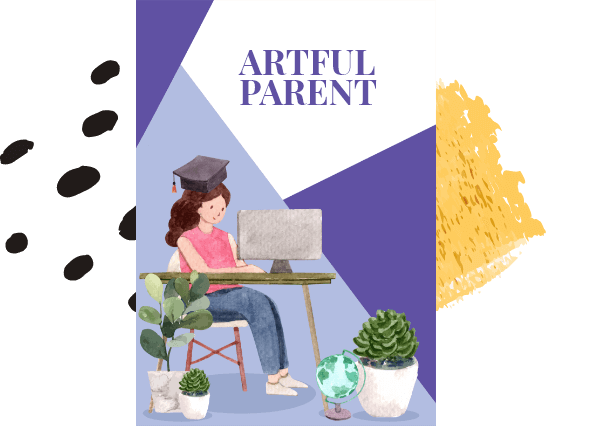This drawing activity for kids about drawing vegetables above and below in the garden is from Drawing Workshop for Kids by Samara Caughey.
Updated April 2024
I love the visual representation of things happening above and below the ground. And it’s especially interesting to draw what’s happening underground, where one can’t normally see.
These representations reveal the mystery of the underground along with the little creatures that may be living there.
A really fun way to try this is to try drawing vegetables above and below the ground. It encourages kids to work on their observational skills – looking closely and drawing what they see. And it gives them the opportunity to draw, paint, and collage.
This drawing activity is featured in my book, Drawing Workshop for Kids, and provides a great way to talk to children about composition because the artwork is separated into two sections.
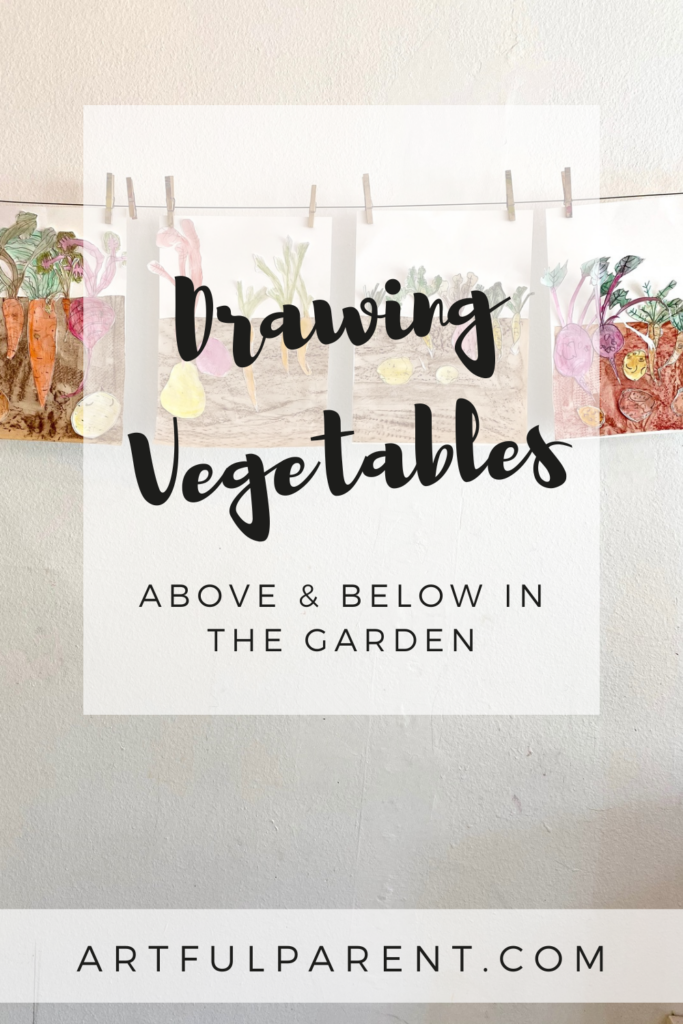
Drawing Vegetables

MATERIALS
- Root vegetables – radishes, beets, carrots, turnips, etc.
- Pencils
- Watercolor paper about 9”x12”
- Watercolor pencils
- Thin paintbrush
- White glue (I put glue in small cups along with brushes for easier spreading. Glue sticks work, too.)
- Scissors
- Drawing paper (90lbs) 9”x12”
- Magnifying glass (optional)
- Charcoal (black) or Conte Crayon (brown)
- Drawing paper 80lbs or thinner (both newsprint and copy paper will work fine)
INSTRUCTIONS
- Observe the vegetables
Lay the vegetables out on the table. Allow the kids to engage with them by feeling and looking at the ones that interest them. The kids will likely discuss which vegetable they like or don’t like, along with the colors and size.
- Draw the vegetables
Have the children choose at least four vegetables to draw onto the watercolor paper. They might choose four carrots or four radishes or a combination of all the veggies.
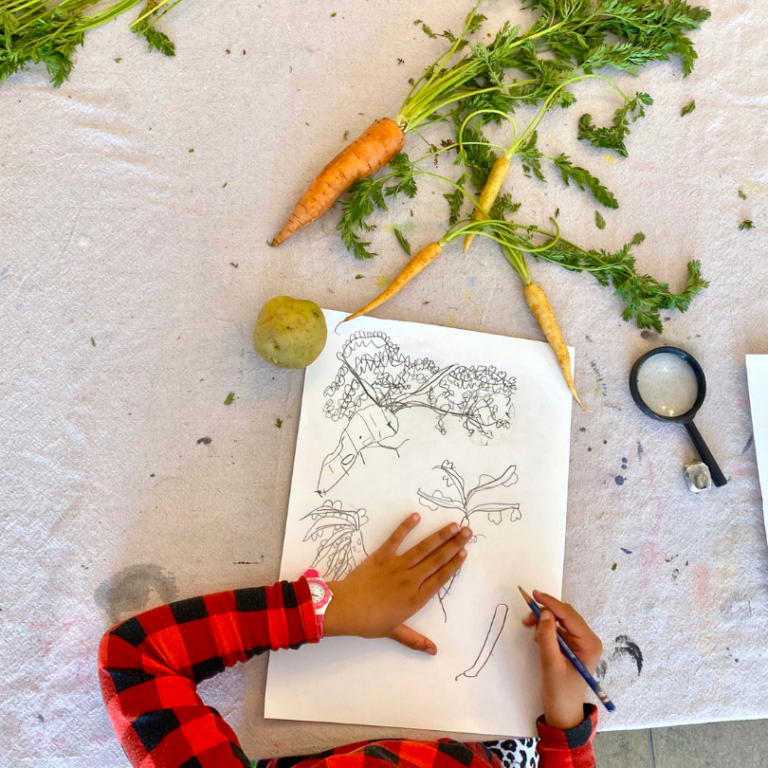
The veggies can be placed anywhere on the paper because they will be cut out later. - Add color
When finished drawing, the children can use watercolor pencils to color in the vegetables.
Don’t wet the pencils for this project but add water with a small paintbrush after filling in the vegetables and greens with color.
The children will be amazed by the transformation of the pencil marks to spreading color.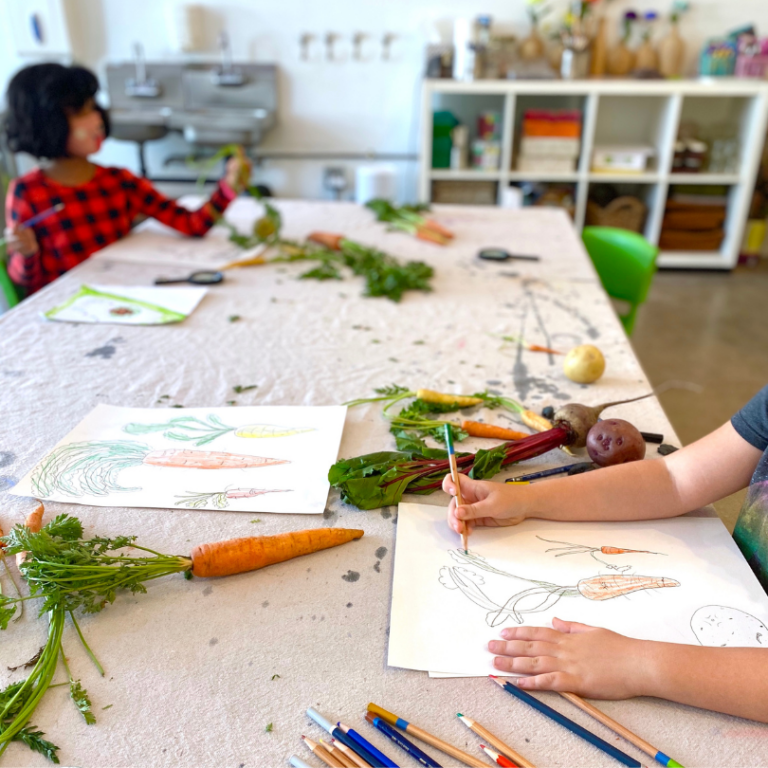
- Create the rubbings
While the watercolor drawings are drying, children can begin work on the rubbings. These will be the soil in the garden.
Encourage the children to look around the house or outside to find textures for the rubbings. Walls, sides of baskets, backs of chairs that may have a pattern, trees, sidewalks, and brick buildings all are great sources of patterns for rubbings.
Show the children how to lay the paper onto the texture. Use the flat, long side of the charcoal stick or crayon and rub it over the paper. The kids can collect as many textures as they like to fill their entire piece of paper. - Create the garden collage
It’s time to collage the garden all together.
First, the children can cut out their vegetables.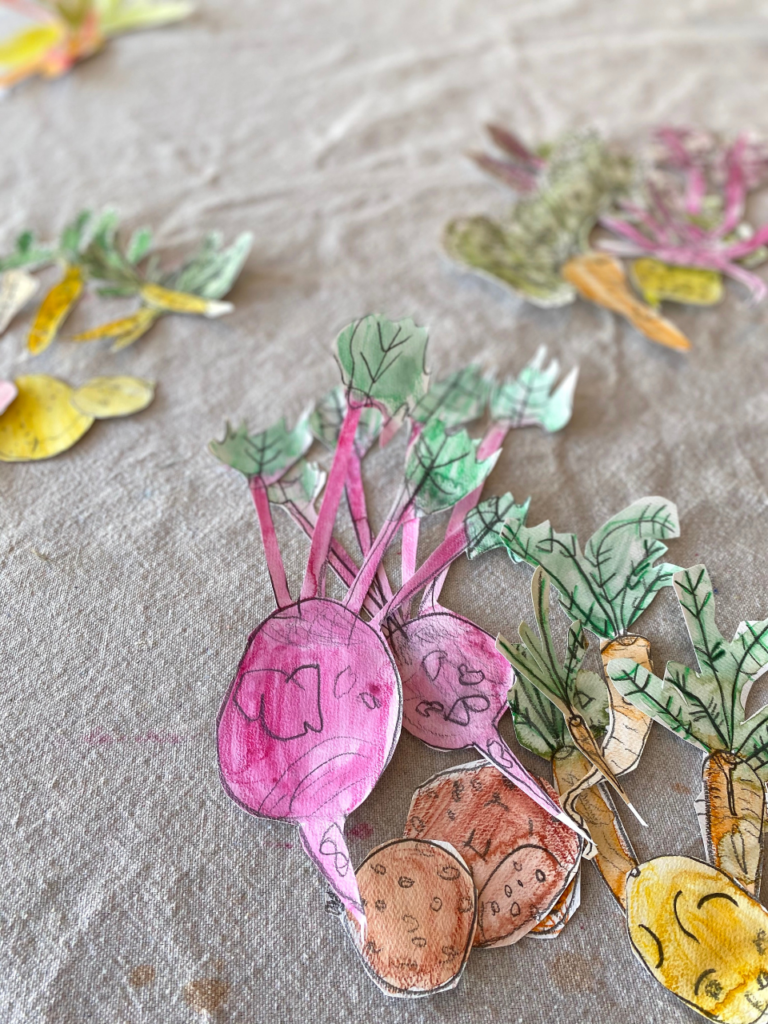
Then have the children place the drawing paper in a vertical orientation.
Cut the paper rubbing to the same size as the bottom half of the paper. You can also rip one side to mimic the roughness of the top layer of ground.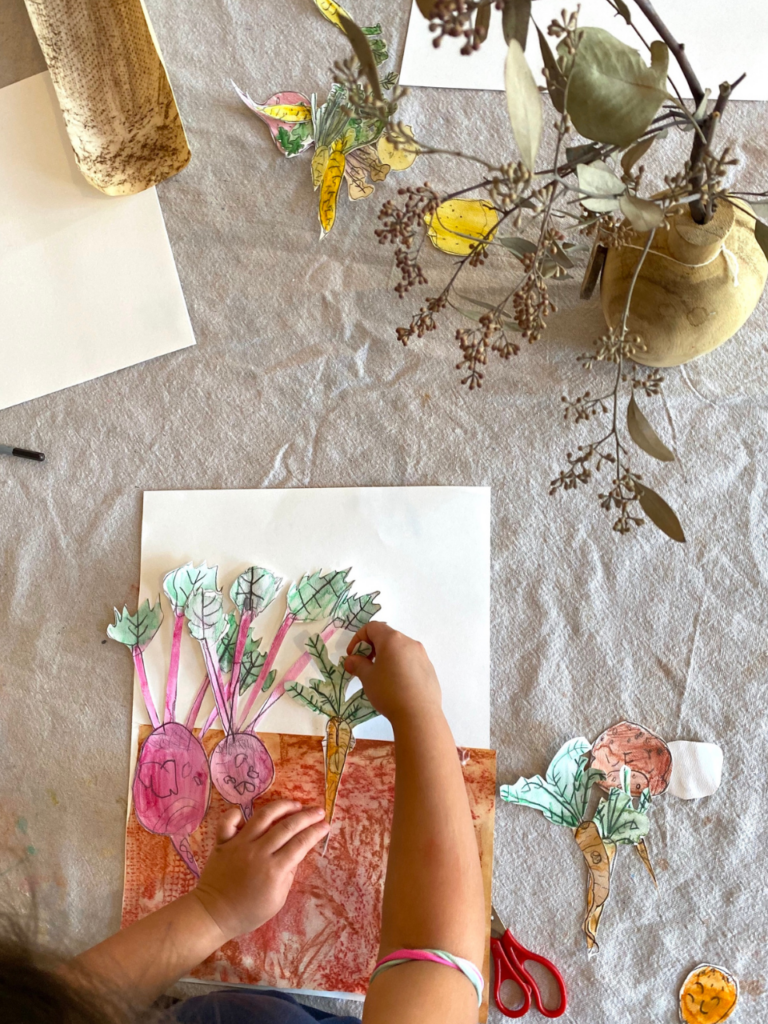
Encourage the children to add their vegetables and move them around a bit. Have them wait until the pieces are arranged just how they like them before gluing in place.
Use a brush to paint glue onto the vegetables and then press them firmly onto the drawing paper.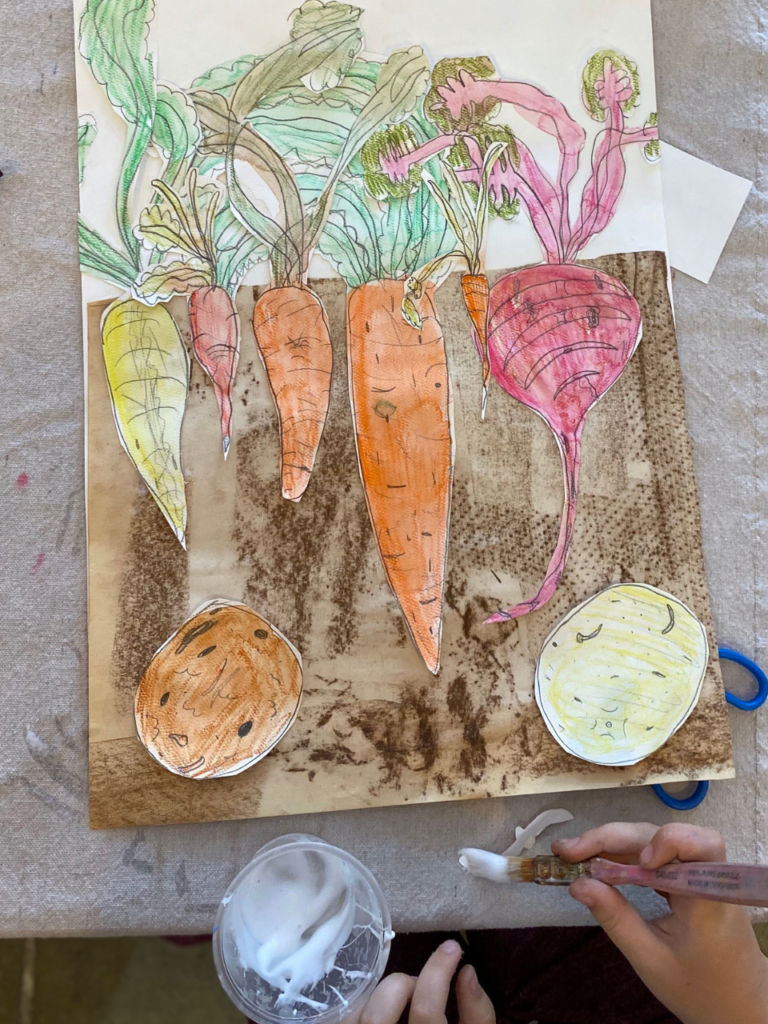
- Add garden details
Finally, the children can create bugs with paper, pencils or markers. They can add bugs that live underground or bugs that fly in the sky!
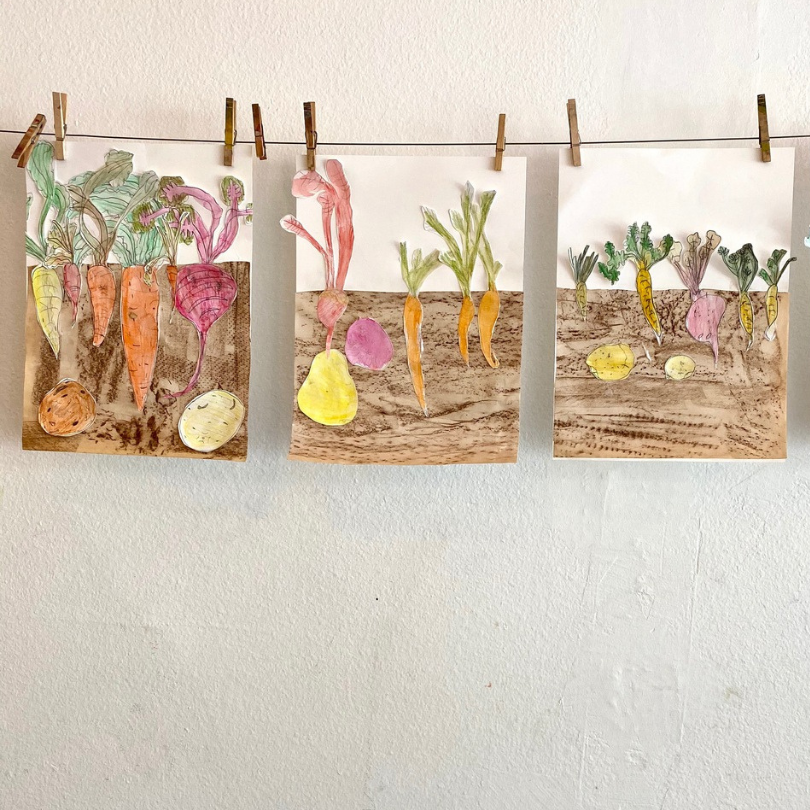
More Drawing Activities for Kids
- Nature Drawing for Kids: How to Make Feather Art in a Box
- Try These Two Beautiful Nature Inspired Art Activities for Kids
- How to Play a Fun Family Drawing Game!
- Observational Drawing for Kids
- How to Encourage Creativity, Skills and Confidence for Kids Drawing
- How to Draw Shadow Art for Kids
Does your child want to explore the world of drawing and expand their skills? Check out our three-part Drawing Skills Master Class for kids! Your child can learn to draw at home with 3 unique modules: Line & Shape, Light & Shadow, and Perspective. With at-home video lessons and easy-to-follow printable workbooks, your child will build skills and confidence as they learn to draw!
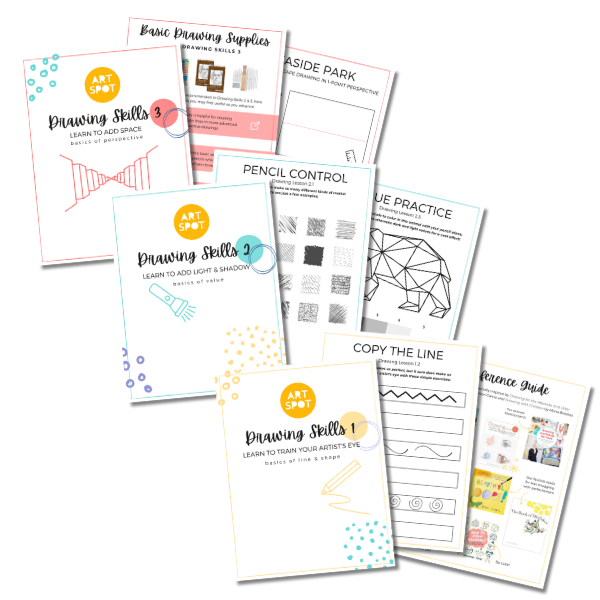
Pin It for Later
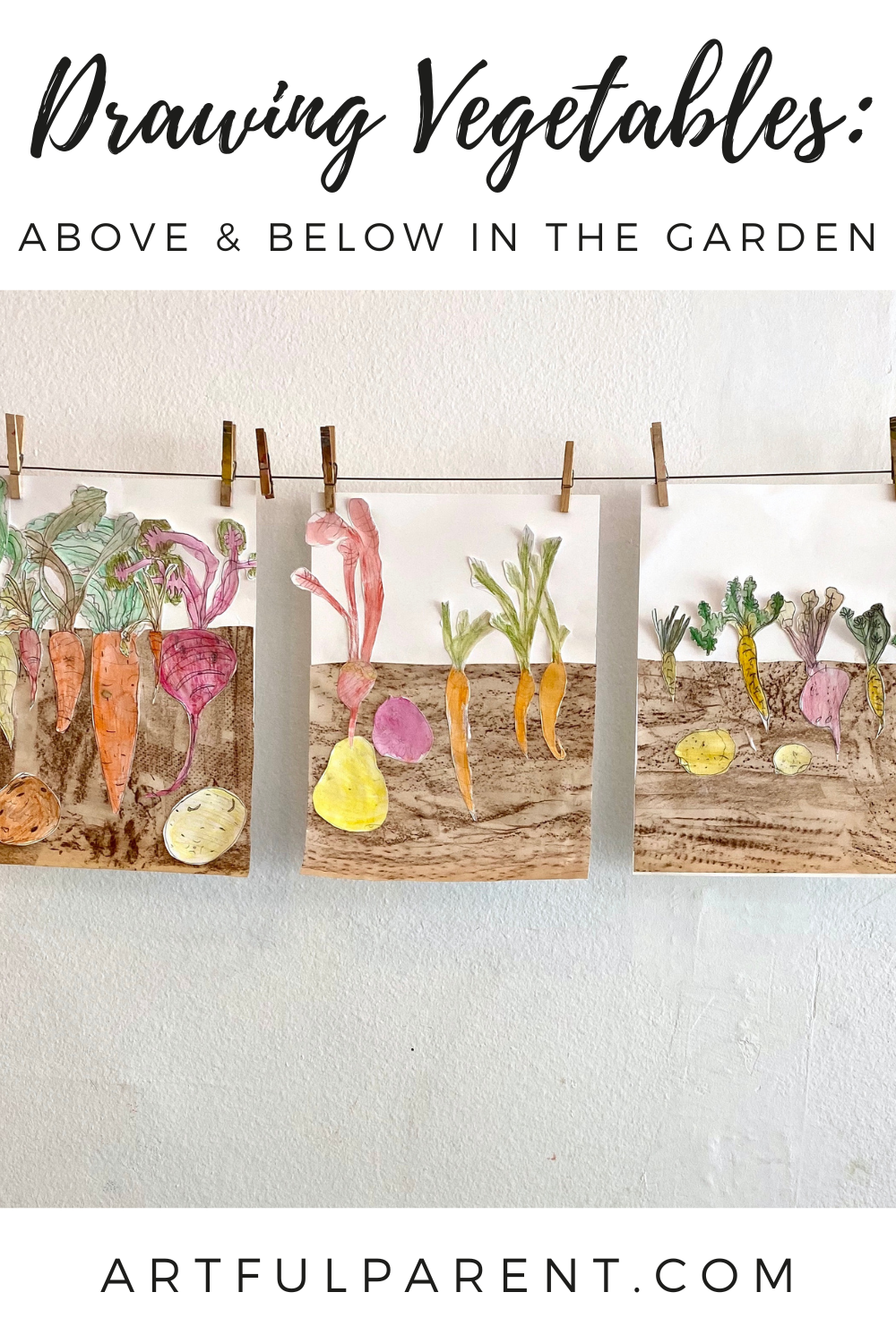
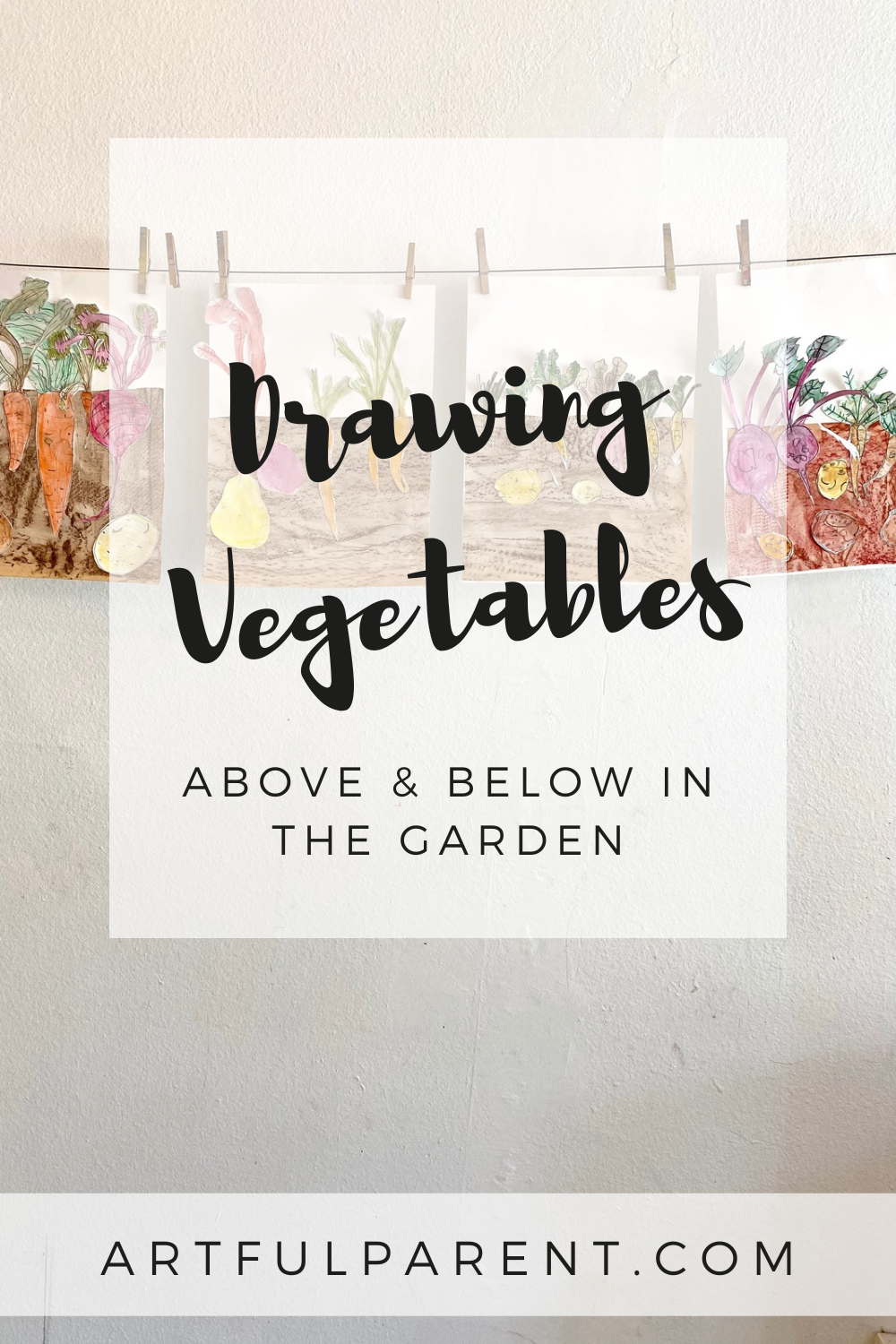

Related Posts
-
Drawing for Kids: Encouraging the Reluctant Artist
Updated June 2022 We often get asked about drawing for kids and specifically on how to…
-
Observational Drawing for Kids
Observational drawing is an excellent way to help children learn to draw what they see.…
-
How to Draw Shadow Art for Kids
Create beautiful shadow art for kids. Simply trace any pattern of shadow and light on…
-
Creative Alternatives to Coloring Books for Kids
Learn how to offer creative, open-ended, and developmentally appropriate alternatives to coloring books for kids.…
-
13 Art Prompts for Kids to Foster Creativity
Art prompts inspire kids to draw differently than a blank piece of paper. Drawing prompts…
-
How to Play a Fun Family Drawing Game!
How to play a fun and collaborative family drawing game. Create portraits by trading drawings…


